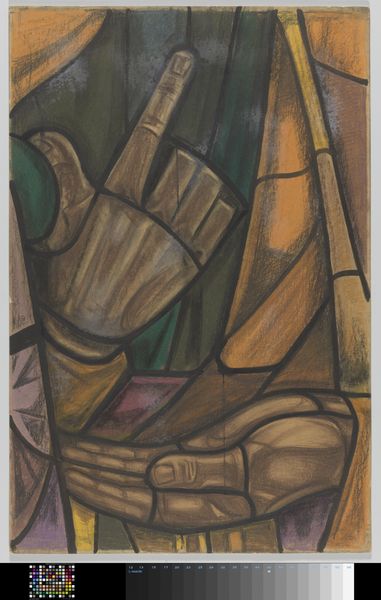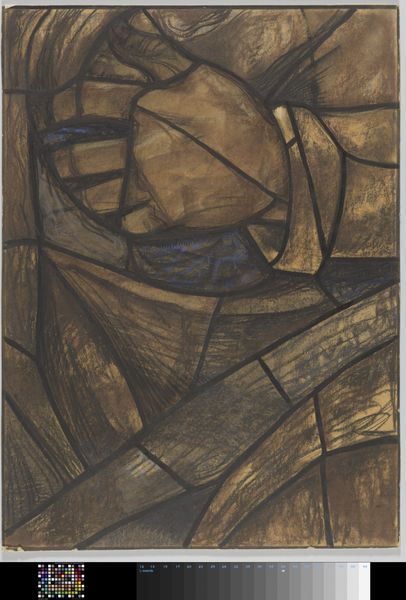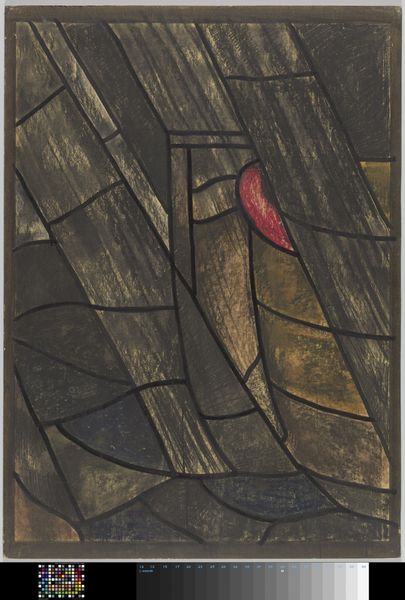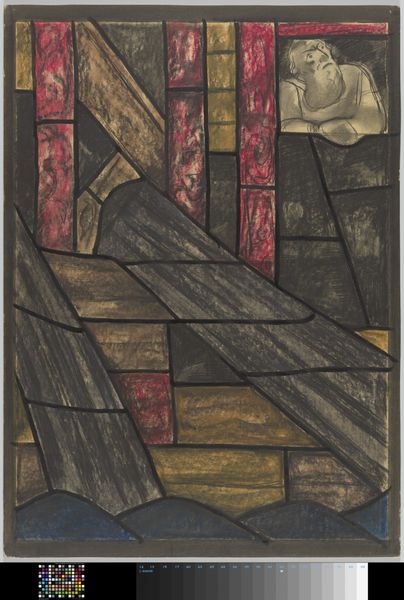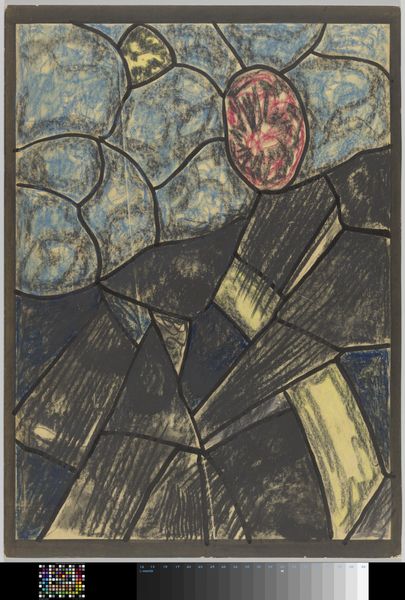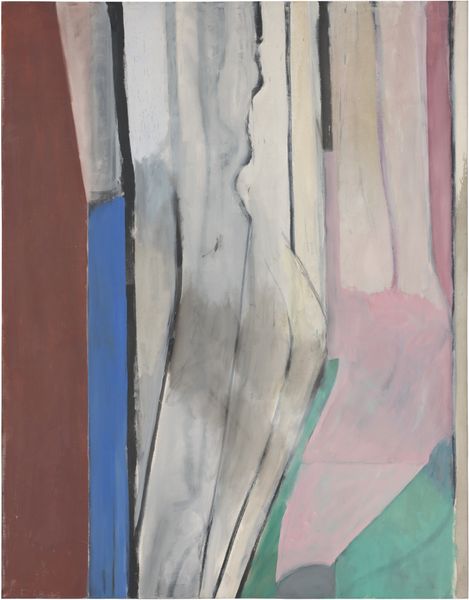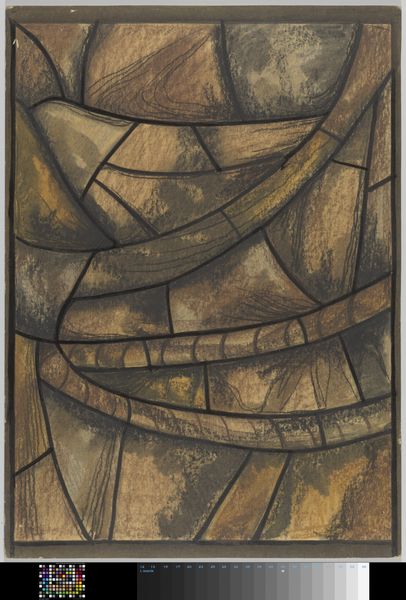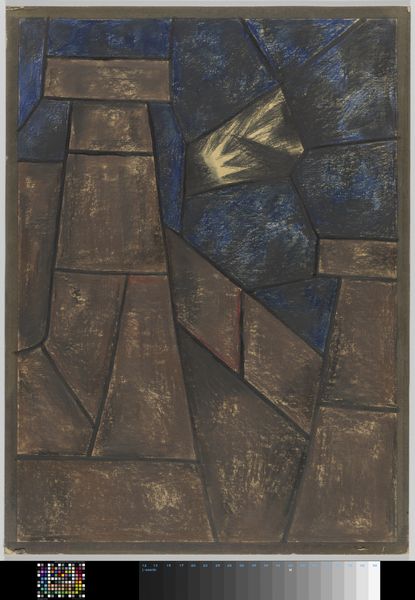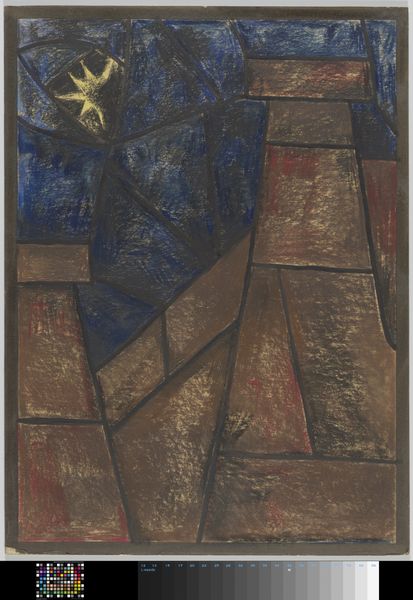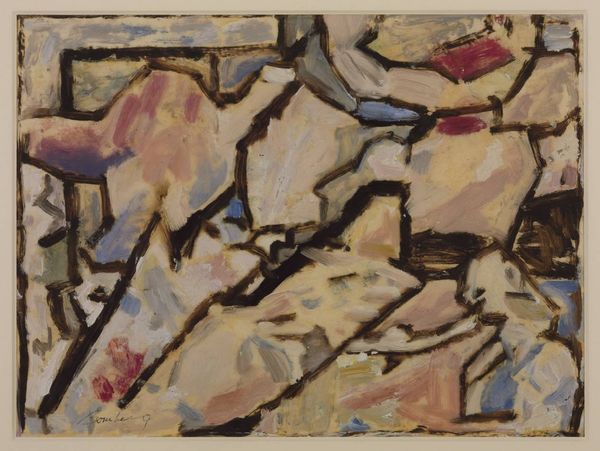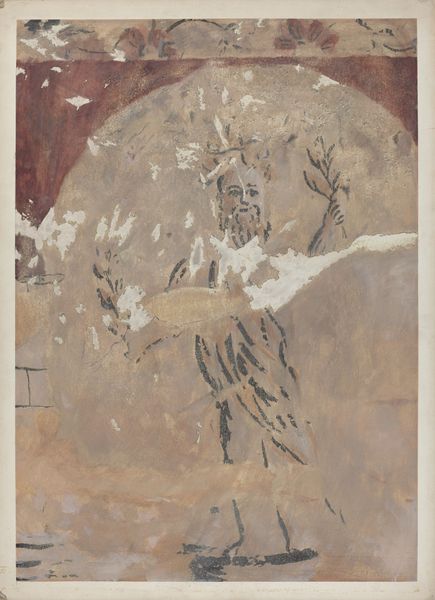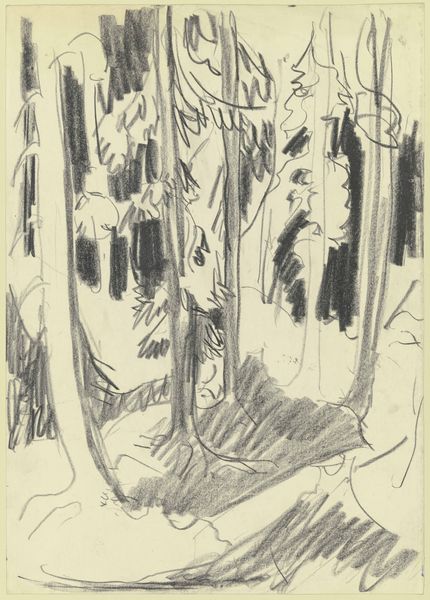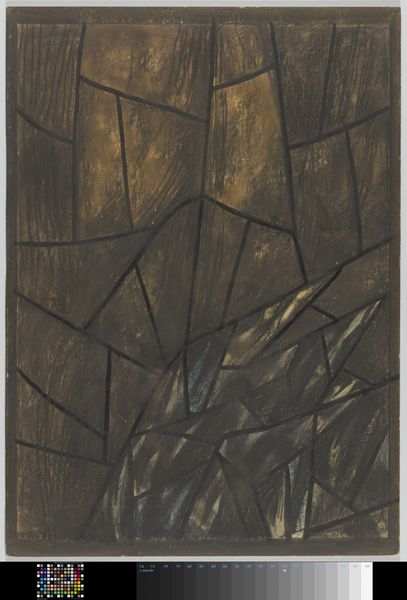
Copyright: Public Domain
Curator: Wow, look at the layers of color and form! It feels almost like staring into a kaleidoscope of personalities. Editor: Exactly. We're looking at Oskar Schlemmer's "Group of Four with Diagonal Profile," created in 1942. It’s currently held at the Städel Museum. The Bauhaus influence is clear, isn't it? I’m curious what visual cues strike you most about this piece? Curator: Definitely the tilted heads. They create such a sense of dynamism. And those earthy colors! It evokes for me the feeling of hidden figures in a crowd, lost in thought and in the shuffle. The geometric aspect also reminds me of Cubism a bit. Editor: You nailed it! It really synthesizes some incredible modernist strands. I see an interplay of power and vulnerability through the figures, each seemingly unaware, with its sharp and soft contours. This is heightened, I think, when knowing the backdrop against which Schlemmer produced this drawing. It was a difficult time in his life. Curator: The heavy use of watercolor also feels very intentional, and how it brings so much fragility. In 1942, that delicacy screams quiet defiance. It feels like a gentle, yet powerful statement amid turmoil, or maybe even as a sort of sanctuary? Editor: I would say that's an astute assessment of this artist, indeed, the watercolor and ink combine for a very evocative and emotional statement of geometric forms. They serve to deconstruct ideas around collective identity. It’s not quite representational and not wholly abstract, which leads the viewer, as it were, to complete a puzzle of historical record. It’s beautiful in how this small watercolor serves that grand effect. Curator: Yeah, there is that beautiful sense of harmony despite a feeling of displacement that hits deep. To me, those silent faces seem to invite introspection. It’s a conversation about our own existence, whispered gently. Editor: A fitting thought to ponder, don't you agree? Shall we move on to the next artwork, then?
Comments
In his late years, Schlemmer headed a laboratory for lacquer technology at the Kurt Herbert lacquer factory in Wuppertal — an activity involving a lot of experimentation with painting technique. It was also a phase in which the artist devoted himself more to painting again in general. The smooth yellow oil paper had been his preferred image carrier since 1935; it enabled him to spread the areas still damp with a brush or a kind of doctor blade. In the diagonal head, that process brought about the fine parallel lines that combine with the remaining hatched application of the paint to create a vibrant overall effect.
Join the conversation
Join millions of artists and users on Artera today and experience the ultimate creative platform.
